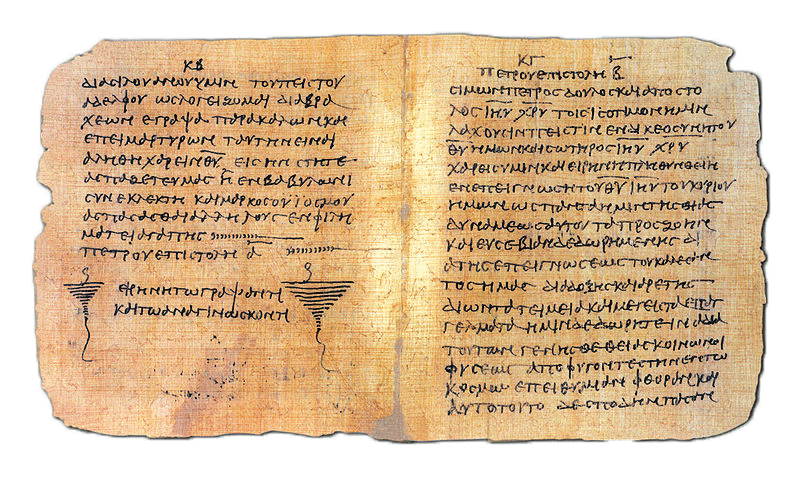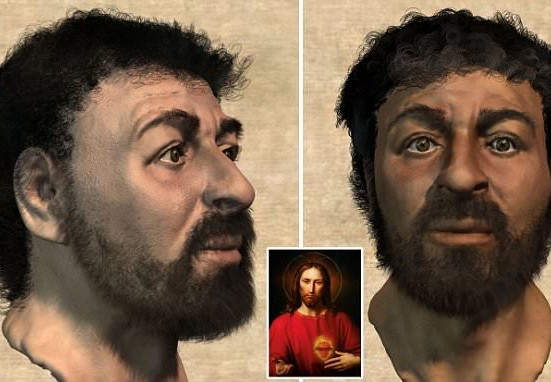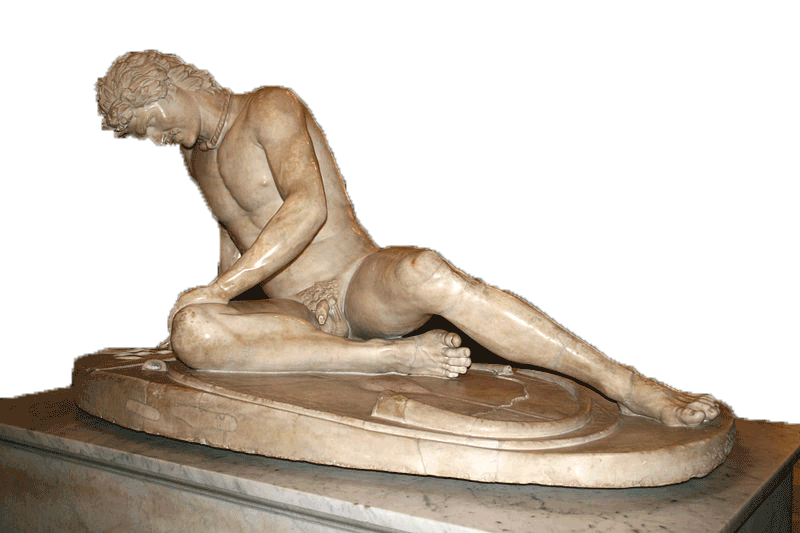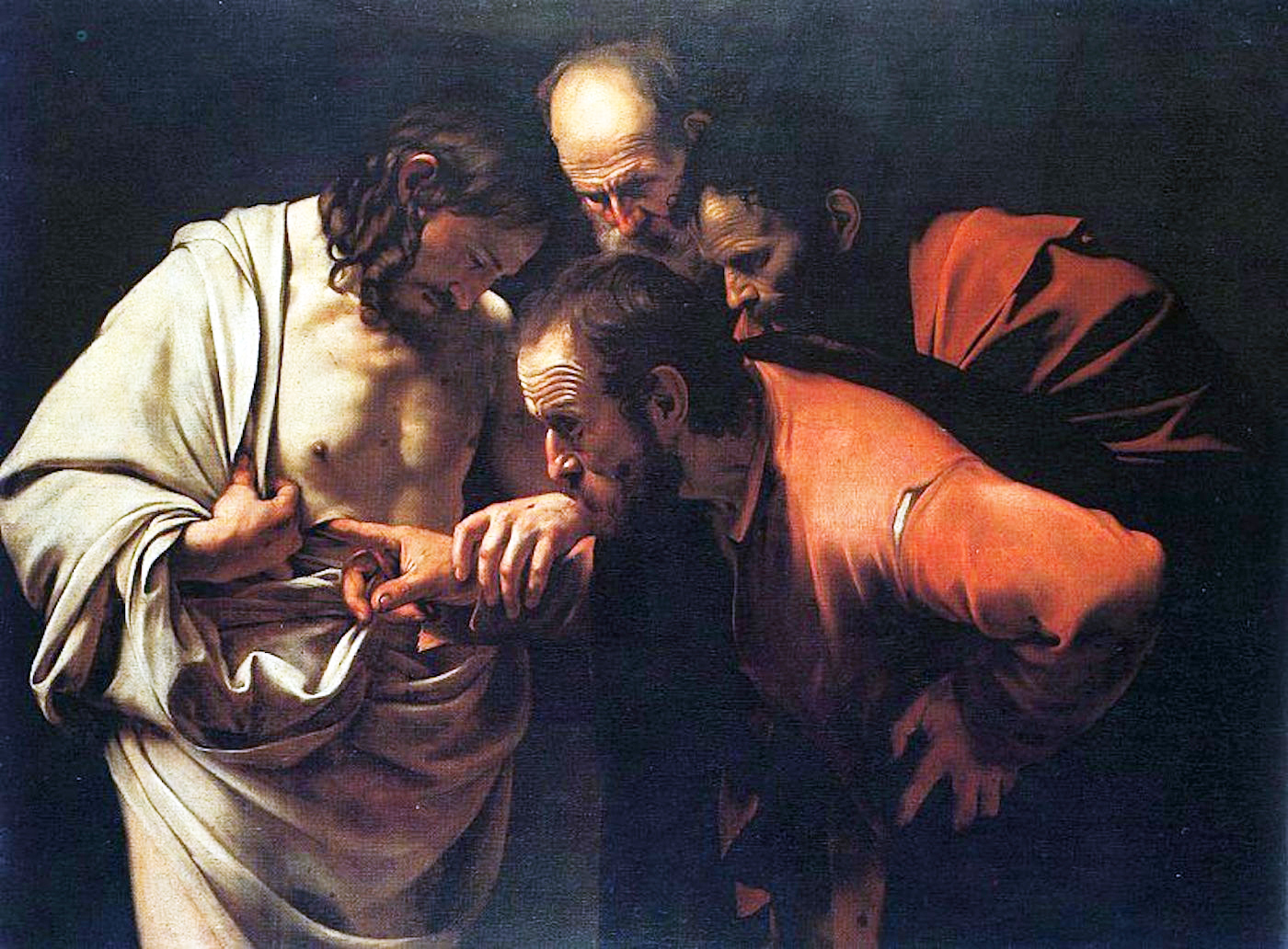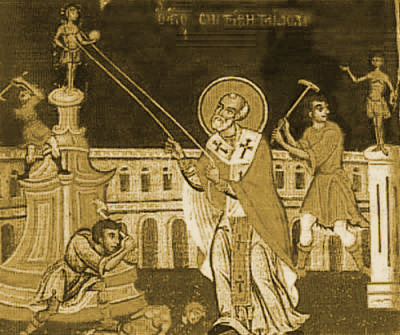
Saint John the Evangelist, a painting by the Italian Baroque painter Domenichino. The problem with the splendid Christian art is that the painters have Nordicized the Semites of the 1st century. Had photography existed in the 1st century of our era, the Aryans would never have projected their beautiful physiques on the ugly rabble of Palestine.
______ 卐 ______
Neither the Gospel of Matthew, nor the Gospel of John, nor John’s Book of Revelation come from the apostles to whom the Church attributes them
Due to the great importance of the ‘apostolic tradition’, the Catholic Church published all the Gospels as books of the apostles or their disciples, which justified their prestige. But there is no proof that Mark and Luke, whose names appear in the New Testament, are disciples of the apostles; that Mark is identical to the companion of Peter, or that Luke was Paul’s companion. The four Gospels were transmitted anonymously.
The first ecclesiastical testimony in favour of ‘Mark’, the oldest of the evangelists, comes from Bishop Papias of Hierapolis, in the middle of the 2nd century. But today there are many researchers who criticise the testimony of Papias; call him ‘historically worthless’ (Marxsen), and even admit that Mark ‘has never heard and accompanied the Lord’.
The apostle Matthew, a disciple of Jesus, is not the author of the Gospel of Saint Matthew which appeared between the 70s and 90s, as is generally assumed. We ignore how he got the reputation of being an evangelist. It is evident that the first testimony comes from the historian of the Church, Eusebius, who in turn accepted the claim of Bishop Papias: about whom he writes that ‘intellectually, he should have been quite limited’. The title ‘Gospel of Matthew’ comes from a later period: we find it for the first time with Clement of Alexandria and Tertullian. Both died at the beginning of the 3rd century. If the apostle Matthew, contemporary of Jesus and witness of his works, had written the Gospel that is attributed to him, would he have had to borrow so heavily from Mark? Was he so forgetful? Did he have so little inspiration?
All critical biblical research considers that there is no reason why the name of the apostle Matthew should appear on the Gospel, since it was not written in Hebrew, as the tradition of the ancient Church affirms, but in Greek. No one is known to have seen the Aramaic original, nor is anyone known to have translated it into Greek; nor in the manuscripts or citations is the slightest remnant of an original Aramaic text preserved. Wolfgang Speyer rightly includes the Gospel of Matthew among ‘fakes under the mask of religious revelations’. K. Stendhal ventures that it is not even the work of a single person but of a ‘school’. According to an almost unanimous opinion of all the non-Catholic researchers of the Bible, that gospel is not based on eyewitnesses.
The most recent Catholic theologians often painfully turn on these facts. ‘In case our Greek version of the Gospel of Matthew had been preceded by an original version in Aramaic…’ writes K. H. Sohelkle. Of course, ‘in case’, says Hebbel with irony, is the most Germanic of the expressions’.
‘An original Aramaic Matthew must have been written several decades before the Greek Matthew’. Not even they themselves believe this. Lichtenberg was not the first to know but was the first to say it accurately: ‘It is clear that the Christian religion is supported more by those people who earn their bread with it than by those who are convinced of its truth’.
It is interesting that the first three Gospels were not published as apostolic, the same as the Acts of the Apostles, whose author we also ignore. The only thing we know is that he who wrote these Acts of the Apostles simply puts on the lips of his ‘heroes’ the most appropriate phrases: something common in old historiography. But these inventions not only constitute a third part of the Acts of the Apostles but are also their most important theological content and, what is particularly remarkable, the writing of this author represents more than a quarter of the entire New Testament. It is generally supposed that the author of the Gospel of Luke is identical to the travelling companion and ‘beloved physician’ of the apostle Paul. But neither the Gospel of Luke nor the Acts of the Apostles are very Pauline. Researchers do not believe today that either of these two works was written by a disciple of Paul.
The Acts of the Apostles and the three Gospels were not signed with the true name or even with pseudonyms: they were anonymous works like many other proto-Christian works, such as the Epistle to the Hebrews of the New Testament. No author of the canonical Gospels cites his name, not once does he mention a guarantor, as the later Christian treatises so often do. It was the Church the first to attribute all these anonymous writings to certain apostles and their disciples. However, such attributions are ‘hoaxes’, they are a ‘literary deception’ (Heinrici). Arnold Meyer notes that ‘with certainty only the letters of the apostle Paul are authentic, who was not an immediate disciple of Jesus’. But it is well known that not all those epistles that appear under his name come from Paul.
John
Since the end of the 2nd century, from Irenaeus, although at first not without controversy, the Church attributes without reason the fourth Gospel to the apostle John: something that all critical researchers have questioned for more than two hundred years. There are many weighty reasons for raising questions.
Although the author of this fourth Gospel, who curiously does not mention any author, affirms having leaned on the chest of Jesus and being a reliable witness, he assures and repeats emphatically that his ‘testimony is true’, that ‘he has seen’ and that he ‘knows’ he is telling the truth so that we ‘may believe’. But this Gospel did not appear until about the year 100, while the Apostle John had been killed long ago, towards the year 44 or, probably, in 62.
The Father of the Church, Irenaeus, who was the first to affirm the authorship of the apostle John, has intentionally confused him with a priest, John of Ephesus. And the author of the second and third epistles of John, which are also attributed to the apostle John, calls himself at the beginning, ‘the presbyter’ (a similar confusion also occurred between the apostle Philip and the ‘deacon’ Philip). Even Pope Damasus I, in his canonical index (382), does not attribute two of John’s epistles to the apostle John, but to ‘another John, the presbyter’. Also, even the Father of the Church Jerome denied that these second and third epistles belonged to the apostle. The arguments against the authorship of the apostle John as ‘the Evangelist’ are so numerous and convincing that even Catholic theologians are starting to manifest, little by little, their doubts.
The same could be said about the Book of Revelation of John, whose author is repeatedly called John both at the beginning and at the end of the book, who also appears as a servant of God and brother of Christians, but not as an apostle. The book was written, according to the doctrine of the ancient Church, by the son of Zebedee, the apostle John, since an ‘apostolic’ tradition was needed to guarantee the canonical prestige of the book. But it did not last long given that the Book of Revelation, which appeared in the last place of the New Testament, was rejected by the end of the 2nd century by the critics of the Bible who otherwise did not deny any dogma.
Pope Dionysius of Alexandria (died 264-265), a disciple of Origen and nicknamed ‘the Great’, categorically denied that John was the author of the Apocalypse. Pope Dionysius points out that primitive Christians have already ‘denied and completely rejected’ the ‘Revelation of John’.
They challenged each and every one of the chapters and declared that the work lacked meaning and uniqueness and that the title was false. They affirmed, in particular, that it did not come from John and that they were not revelations since they were surrounded by a multitude of incomprehensible things. The author of this work was not one of the apostles, no saint and no member of the Church, but Cerinthus, who wanted to give a credible name for his forgery and also for the sect of his own name.
The theologian and Protestant bishop Eduard Lohse comments: ‘Dionysius of Alexandria has very accurately observed that the Revelation of John and the Fourth Gospel are so far apart in form and content that they cannot be attributed to the same author’. The question remains whether the author of the Book of Revelation wanted to suggest, by his name John, to be considered a disciple and apostle of Jesus. He does not say that explicitly: it was done by the Church to confer apostolic authority and canonical prestige on his text. And so falsifications started: the falsifications of the Church.
______ 卐 ______
Liked it? Take a second to support this site.
